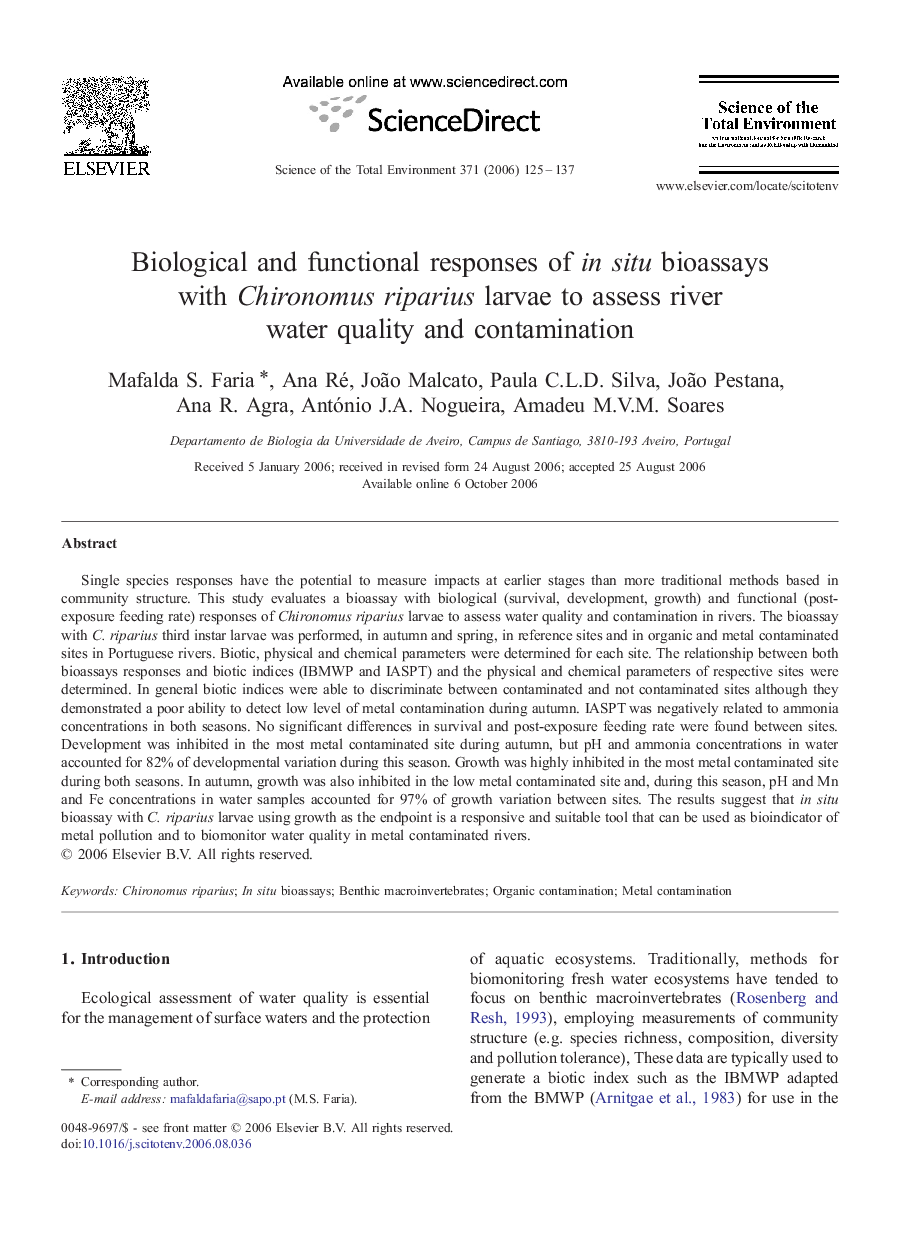| کد مقاله | کد نشریه | سال انتشار | مقاله انگلیسی | نسخه تمام متن |
|---|---|---|---|---|
| 4433703 | 1619963 | 2006 | 13 صفحه PDF | دانلود رایگان |

Single species responses have the potential to measure impacts at earlier stages than more traditional methods based in community structure. This study evaluates a bioassay with biological (survival, development, growth) and functional (post-exposure feeding rate) responses of Chironomus riparius larvae to assess water quality and contamination in rivers. The bioassay with C. riparius third instar larvae was performed, in autumn and spring, in reference sites and in organic and metal contaminated sites in Portuguese rivers. Biotic, physical and chemical parameters were determined for each site. The relationship between both bioassays responses and biotic indices (IBMWP and IASPT) and the physical and chemical parameters of respective sites were determined. In general biotic indices were able to discriminate between contaminated and not contaminated sites although they demonstrated a poor ability to detect low level of metal contamination during autumn. IASPT was negatively related to ammonia concentrations in both seasons. No significant differences in survival and post-exposure feeding rate were found between sites. Development was inhibited in the most metal contaminated site during autumn, but pH and ammonia concentrations in water accounted for 82% of developmental variation during this season. Growth was highly inhibited in the most metal contaminated site during both seasons. In autumn, growth was also inhibited in the low metal contaminated site and, during this season, pH and Mn and Fe concentrations in water samples accounted for 97% of growth variation between sites. The results suggest that in situ bioassay with C. riparius larvae using growth as the endpoint is a responsive and suitable tool that can be used as bioindicator of metal pollution and to biomonitor water quality in metal contaminated rivers.
Journal: Science of The Total Environment - Volume 371, Issues 1–3, 1 December 2006, Pages 125–137